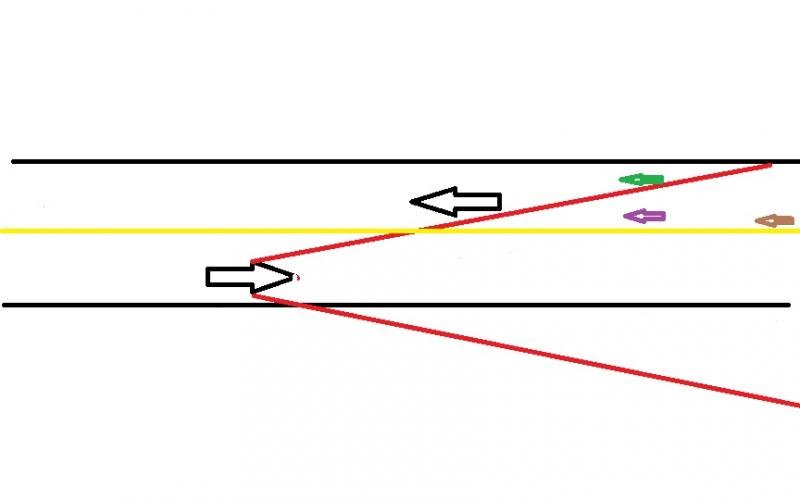sedanman
neanderssance man
.................. and what I learned from his mistake. This happened on a chilly, wet, overcast morning in November. It was a little after 7 am and not fully light yet. I was coming home from working the night shift. About half way home on my 52 mile commute there is a "Y" intersection. The main road has asweeping gentle curve with decent visibility and a big honking traffic light controlling the inersection with the smaller local road. I was travelling north and waiting to turn left onto the local road. The light for traffic on the main road was green in both directions and I was waiting in the left turn lane. I scanned the road looking for a break in traffic. I was a break that was more than adequate for me to safely make my turn. As I had committed to my turn I saw what had been hidden from me just a heartbeat before, the headlight of what I think was a Triumph Bonneville America headed right at my passeger side. If I tried to stop, the motorcyclist would not have been able to in the available distance. I was already moving fast enough that standing on the throttle was the best course of action to get me out of his way, so I did. We had a close call and I would have been the "cager" that "didn't see him". Well I DIDN'T see him until it was almost too late. He made two serious errors in my humble opinion. His lane position was to the far right and he was following the car ahead of him a little too closely. Had he been riding to left of the lane and a little further back from the car in front he would have been much more visible to oncoming (left turning) cars and he would have a far less obstructed view of the hazards ahead. Now I do realize that by the letter of the law if we had collided, I would be totally at fault, but that would not have spared him from serious injury. He should have been doing more to make himself conspicuous instead of hiding behind the car in front of him. I am now more aware of how something as simple as lane position can make a difference in being seen.

